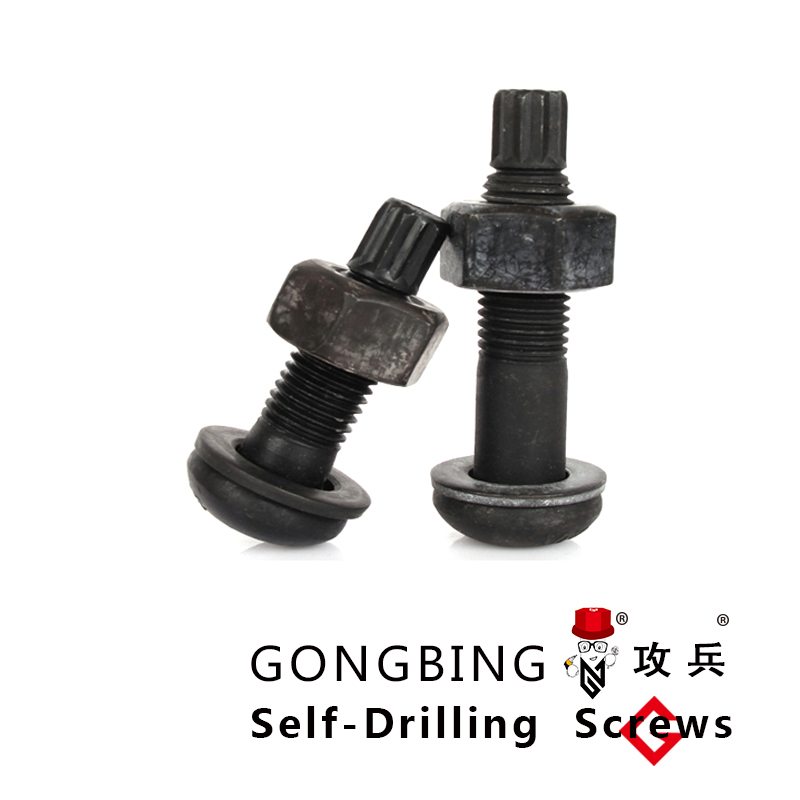Chemical Composition and Performance of Anchor Bolts in Construction Applications
Chemical Set Anchor Bolts A Comprehensive Overview
Chemical set anchor bolts are an essential component in the construction and engineering industries, providing a reliable method for securing various structures to concrete surfaces. Unlike traditional mechanical anchors that rely on friction to hold them in place, chemical anchors utilize a resin-based adhesive to bond the anchor bolt to the surrounding material. This innovative technology has revolutionized the way anchors are installed and used, offering numerous advantages over traditional methods.
One of the primary benefits of chemical set anchors is their exceptional load-bearing capacity. Because they rely on chemical bonding rather than mechanical friction, these anchors can achieve higher strength ratings than their mechanical counterparts. When properly installed, chemical anchors form a strong, durable bond with the concrete, making them ideal for heavy-duty applications such as securing machinery, supporting structural beams, or installing heavy shelving units.
The installation process for chemical set anchoring systems is relatively straightforward, although it requires careful attention to detail. First, a hole is drilled into the concrete at the desired location. The diameter and depth of the hole depend on the specific type of anchor being used and the load it needs to support. After drilling, the dust and debris from the hole must be thoroughly cleaned, as this can significantly affect the bond strength of the chemical adhesive.
Once the hole is prepared, the anchor bolt, along with the resin cartridge, is inserted into the drilled hole. The resin usually consists of two components a base and a hardener. When mixed together, these components create a strong adhesive that cures over time to form a solid bond. It's essential to ensure that the anchor bolt is positioned correctly and to the required depth before the resin sets.
chemical set anchor bolts

One of the significant advantages of chemical anchors is their versatility. They can be used in a variety of applications, including both indoor and outdoor environments. Their resistance to environmental factors, such as moisture and temperature fluctuations, makes them suitable for use in various conditions. Furthermore, chemical anchors can be installed in solid concrete, brick, and other masonry materials, enhancing their applicability across different construction projects.
Another noteworthy benefit is the flexibility that chemical set anchor bolts provide in terms of post-installation adjustments. In many cases, traditional mechanical anchors can become compromised if adjustments are needed after installation, leading to the need for replacement. In contrast, chemical anchors allow for some degree of adjustment even after they have been set, which can save time and resources during the construction process.
However, despite their many advantages, it is crucial to consider the specific requirements and conditions of each project before opting for a chemical set anchor. Factors such as substrate type, load requirements, and environmental conditions should all be taken into account. Additionally, proper installation techniques are critical to ensure the bonds achieve their full strength potential.
In conclusion, chemical set anchor bolts represent a significant advancement in anchoring technology, offering a robust and versatile solution for securing fixtures and structures in various construction and engineering applications. Their ability to provide high load capacities, resilience in different environments, and flexibility for adjustments makes them an ideal choice for many projects. As the construction industry continues to advance, the demand for innovative anchoring solutions like chemical set anchors will likely grow, driving greater efficiency and reliability in construction practices. Whether you’re a contractor, engineer, or DIY enthusiast, understanding the benefits and applications of chemical set anchor bolts can significantly enhance your projects' success.
-
Weatherproof Plastic Expansion Anchors for OutdoorNewsJun.06,2025
-
Sustainability in the Supply Chain: Eco-Friendly TEK Screws ProductionNewsJun.06,2025
-
Load-Bearing Capacity of External Insulation FixingsNewsJun.06,2025
-
Double Head Bolts: Enhancing Efficiency in Industrial MachineryNewsJun.06,2025
-
Corrosion Resistance in Chipboard Screws: Coatings for Wholesale DurabilityNewsJun.06,2025
-
Butterfly Toggle Bolts : Enhancing Structural ResilienceNewsJun.06,2025
